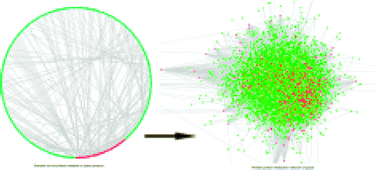Promiscuous domains: facilitating stability of the yeast protein–protein interaction network
Abstract
Domain–domain interactions are a critical type of the mechanisms mediating

* Corresponding authors
a
State Key Laboratory of Earth Surface Processes and Resource Ecology and College of Life Sciences, Beijing Normal University, Beijing 100875, China
E-mail:
linkui@bnu.edu.cn
Fax: +86-10-58807721
Tel: +86-10-58805045
Domain–domain interactions are a critical type of the mechanisms mediating

 Please wait while we load your content...
Something went wrong. Try again?
Please wait while we load your content...
Something went wrong. Try again?
E. Pang, T. Tan and K. Lin, Mol. BioSyst., 2012, 8, 766 DOI: 10.1039/C1MB05364G
To request permission to reproduce material from this article, please go to the Copyright Clearance Center request page.
If you are an author contributing to an RSC publication, you do not need to request permission provided correct acknowledgement is given.
If you are the author of this article, you do not need to request permission to reproduce figures and diagrams provided correct acknowledgement is given. If you want to reproduce the whole article in a third-party publication (excluding your thesis/dissertation for which permission is not required) please go to the Copyright Clearance Center request page.
Read more about how to correctly acknowledge RSC content.
 Fetching data from CrossRef.
Fetching data from CrossRef.
This may take some time to load.
Loading related content
